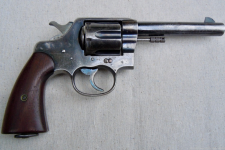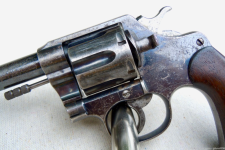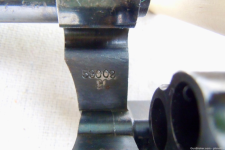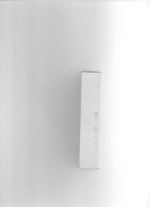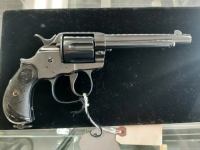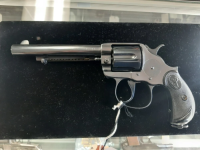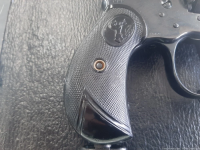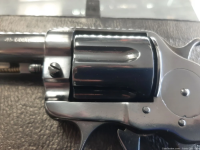While the M1892 was faster to load and fire the Army felt that the .38 cartridge lacked the necessary stopping power, most notably in the Philippines, and despite attempts to increase the power of the .38 it was finally realised that a larger cartridge was needed. The Army Ordnance Corps board sought a new pistol to chamber the older .45 Long Colt round. While the
Board of Ordnance began a series of tests, in 1904, to discover what sort of ammunition its next sidearm should use.
In the meantime a stopgap measure was needed, despite the reissuing of some older .45 calibre revolvers, it was decided that a new double action revolver in the Army’s .45 calibre cartridge was needed. Colt developed a new larger framed double-action revolver based on their Colt New Army.
The Colt New Service was first introduced in 1898 and would be the basis of the Colt M1909. With the base design of the pistol already in production Colt were able to begin delivering M1909s quickly. The Model 1909 was a large revolver, weighing just under 40oz with a 5.5 inch barrel.
The US Army did reissued some of the Model1873 Colt Single Action revolvers with shortened 5.5 inch barrels during the Philippine Insurrection. However, the 1873 Models were slower to load since each round had to be individually loaded through a loading gate while the Model 1909 with its swing out cylinder was much quicker to load. Also the new .45 Long Colt cartridges adopted to the Model 1909 were a bit larger than the old 45 ammunition for the Model 1873 and thus only three rounds could be loaded into the Model 1873 cylinder.
The Model 1909 was also chambered for the .45 Calibre Revolver Ball Cartridge, Model of 1909, which was dimensionally similar to the original .45 Colt cartridge, but it has a rim that is .03 inches (0.76 mm) wider for a more positive ejection with the use of the swing-out cylinder's star extractor.
The Army, Marine Corps and Navy ordered the Mode 1909s as a stop-gap measure until the new Colt Semi-automatic Model 1911s could be issued in large numbers (most Model 1909s were supplied by Colt in 1911 according to shipping records I've seen).

